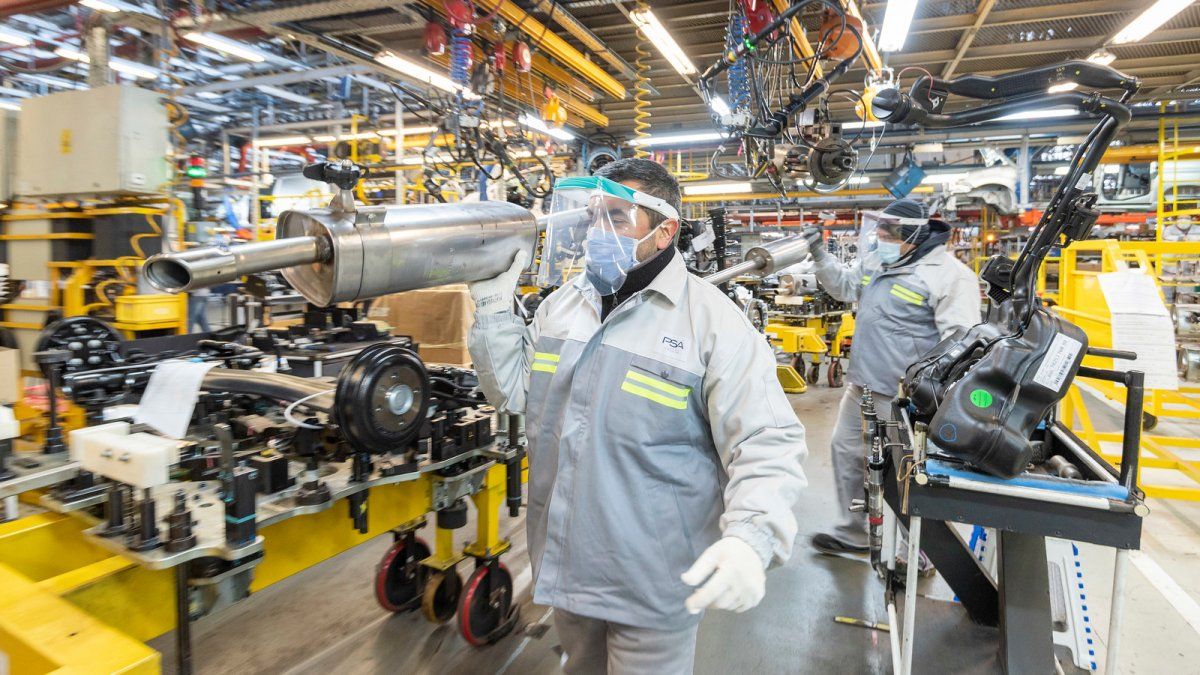According to the latest data released by the INDEC, in november industrial activity grew 1.4% year-on-year and 15.8% compared to the same month in 2019, chaining a period of ten months of consecutive increases. With respect to October, it expanded 0.8% without seasonality and, after the months of June-September of this year, it was at the highest production levels in the last five years.
In December, the index prepared by CEP XXI (which takes energy consumption on the basis of CAMMESA), fell 0.6% in the monthly comparison and 2.7% year-on-year. In this regard, the study highlighted that the last month of 2022 had one business day less than the same month of 2021 and that the automotive sector, one of the sectors that is pulling downwards, reported three fewer business days. However, if production levels are compared with the pre-pandemic, December 2019, industrial production was 13.7% higher.
Projections for 2023
After the good level of production that the industry registered last year, the sector projects a good 2023, although it will not be exempt from the challenges that have persisted in recent times.
“For the industry, 2022 was positive. It could have been even better, but the limit of growth was determined by imports”, pointed to Ambit Daniel Rosato, president of Industriales Pymes Argentinos (IPA), who added: “For both 2023 and 2024 we see a good projection, which comes mainly from the hydrocarbons and mining sector. There are important investments in the oil and gas sector, which generate projects and give a lot of work. From the industrial SME sector, which provides services to the oil industry, we see that we have projects that are about to come out and that are going to mean a lot of activity”.
Regarding the challenges that the sector will have to face, Rosato pointed out that the concern goes through “the importation of machines, capital goods”. “But we think that the agreement with Brazil is important, especially the one linked to the common currency, which will allow the game to be opened. Many purchases will be from Brazil, which is a major manufacturer of capital goods. And without depending on the dollar. There is also the possibility that many Brazilian banks operate with Argentine banks, with guarantees that Argentine banks can give to Brazilian banks. If this possibility occurs, it will be good”, highlighted the head of IPA.
“To a large extent, it can ease the demand for dollars. Many things that China offers, for example, we also have in Brazil. There we have to put together a strategy with Brazil and try to provide ourselves with capital goods, raw materials. If this progresses, it can be very positive for the sectorRosato concluded.
For his part, Silvio Zurzolo, president of ADIBA and deputy secretary of the UIA, stressed that it is “positive to be able to articulate with the CNI of Brazil from the UIA, in order to generate joint work between the industries of the two countries.” “It is a great advance to have reached a joint work agreementIt seems to me that it adds a lot to Argentina, understanding that Brazil can have great potential for all our products,” he explained.
“Regarding the projections for this year, as we have been seeing, there is growth in the industry, but there are also big issues to solve: We continue with problems of lack of inputs, we are going to have to absorb a very high parity in terms of prices, and it is very difficult to accommodate the numbers with the current inflation. With which, we see a positive scenario, but there are also some negative things that we have to see how we can solve together. And I believe that the solution is to put together a productive plan with social inclusion in the medium term”, concluded Zurzolo.
Source: Ambito
David William is a talented author who has made a name for himself in the world of writing. He is a professional author who writes on a wide range of topics, from general interest to opinion news. David is currently working as a writer at 24 hours worlds where he brings his unique perspective and in-depth research to his articles, making them both informative and engaging.




